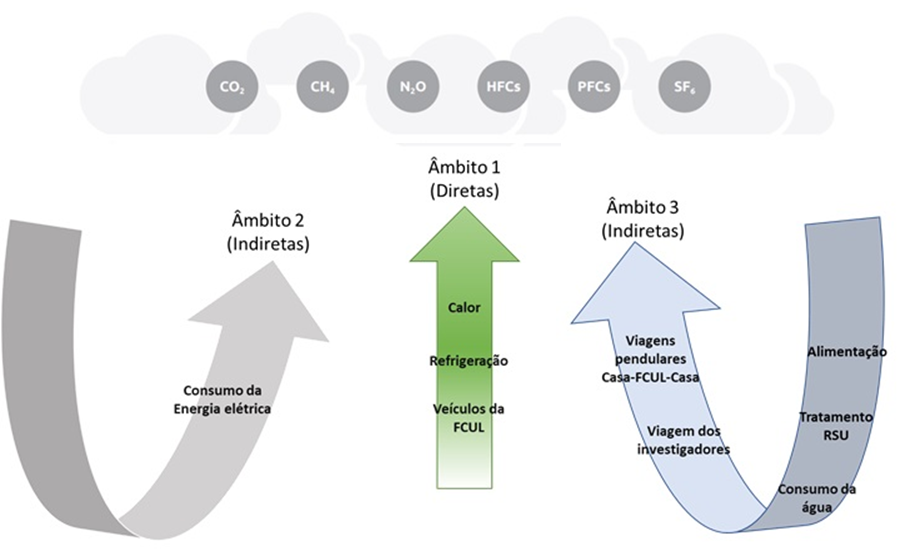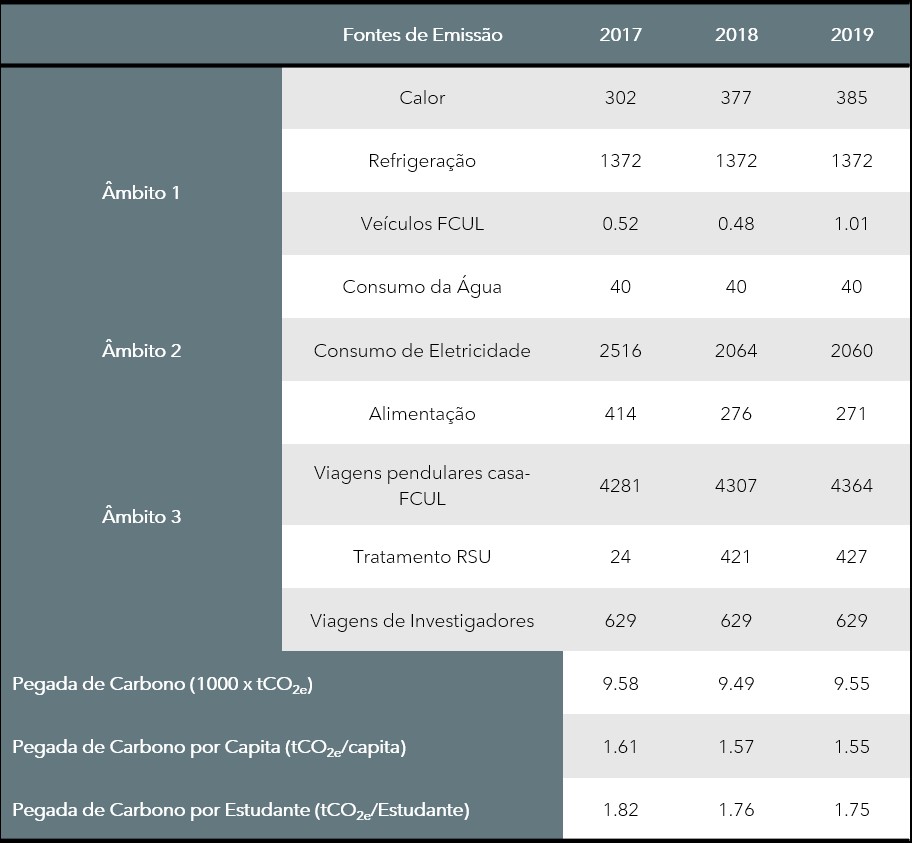As part of a master's thesis of the integrated master's degree in energy and environment management a survey of consumption int 2017, 2018 and 2019 sums:
- electricity;
- natural gas;
- liquid nitrogen;
- coolant for air conditioning equipment;
- water;
- gasoline, diesel and electricity in transports house-FCUL-house;
- gasoline, diesel, electricity in home-trip scientific-home transports;
- paper, plastic, glass;
- food;
- treatment of municipal solid waste (USC)
The survey on the displacements house-FCUL-casa was made in 2017 (https://repositorio.ul.pt/handle/10451/45492 ) and was repeated again in 2022, under the Sustainable Campus Network (RCS-Portugal, Sustainable Mobility work group). The survey of home-trip-scientific-house travel was carried out in 2019 and it is now being ascertained the possibility of its repetition.
Methodology
The carbon footprint followed the Publicly accessible GreenHouse Gas protocol (World Council for Sustainable Development and World Resources Institute) and the calculation base of the Department for Business, Energy & Industrial Strategy of UK. In this methodology emissions are divided into direct (scope 1) and indirect (scope 2 and scope 3).

Greenhouse gases (GHGs) associated with emission sources. Adapted: GHG protocol.
Carbon Footprint of the Faculty of Sciences of the University of Lisbon.

Conclusions
Typically our carbon footprint is around 1,6 tons of CO2 equivalent per capita. Given that among students, faculty and staff we are about 6000 people this represents 9600 tons of greenhouse gas emissions annually. It should be noted that commuting home-FCUL-home account for 45% of emissions, followed by electricity (21%) and refrigeration (14%). The teaching of sustainable mobility (curricular unit of 2nd and 3rd cycles) can contribute to lower the impact of commuting, as well as scientific travel.

